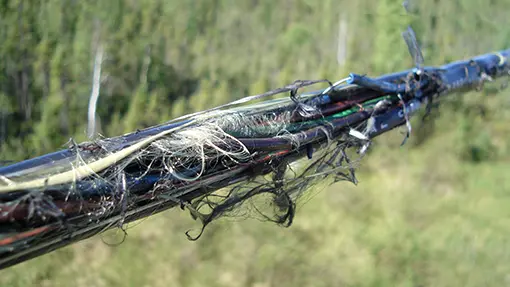


|
||
|
||

It’s almost impossible to talk about broadband at the community level without talking about resiliency and redundancy. It’s hard to find rural communities that haven’t experienced a broadband outage due to a fiber being cut somewhere. The issue hits the news when there are reports of regional or national broadband outages.
It’s something that regulators talk about a lot. The FCC talks about having goals for resiliency in many different dockets. The FCC, NTIA, and USDA require that grant proposals promise to promote resiliency. While it’s something that gets talked about, there are no national or state plans for broadband resiliency. There are no specific standards related to resiliency for large networks. There are no national, state, or regional standards for broadband resiliency.
We don’t have to look far to find a similar industry that dealt with the issue. In August 2003, a high-voltage power line in rural Ohio brushed against an untrimmed tree, setting off a huge blackout that lasted for two days and spread to cover 50 million people in the Midwest, Northeast, and Canada.
This was a wake-up call for the power industry. At that time, local electric grids were set up to interface automatically with neighboring grids to make it easy to pass excess power from region to region. While that was beneficial to electric companies, it also meant that a problem on one grid could quickly spread to neighboring grids. Electric companies nationwide responded to this and similar large outages by dividing the national electric grid into regional grids that could block rolling blackouts or brownouts. There are still occasional regional electric outages, but even within regions, electric grids have been modified to hinder widespread outages.
When the only communication grids in the country were provided by telephone companies, the communications networks had some similar protections built in. The Bell companies and a few other large telephone companies operated a nationwide network comprised of regional hubs centered around large tandem switching centers. While a local community could lose voice traffic if wires were cut, it was not possible for any local event to knock out multiple regions or have a nationwide impact.
Today’s communications networks are configured differently, both in terms of fiber resiliency and electronics resiliency.
The long-haul fiber grid is comprised of fiber routes built by numerous fiber builders like Lumen (Level 3), Zayo, AT&T, Verizon, large cable companies, and many other regional fiber providers. There is no nationwide planning or coordination for the placement of long-haul fiber. Companies build fiber routes in places and along routes where they think they can make money. The first major fiber long-haul routes were built to connect major and regional Internet POPs. Today, the routes have been extended to reach numerous data centers, which, more often than not, are off the beaten path. From a fiber routing perspective, the long-haul fiber network mostly has route redundancy. If a major fiber gets cut, most of the traffic can be rerouted in different directions.
Redundancy is far more hit-and-miss regionally or inside a state. Any state with large rural areas can still point out communities that have only one option for fiber backhaul (and even some with none). Redundancy at the regional and local level is often rare, and a fiber cut can knock out a lot of customers or even a whole town or a region. There is also no consistency in pricing, with local middle-mile fiber often priced at exorbitant rates. We know how to create more route resiliency—by building the needed middle-mile fiber network. This is obviously not a national priority since the IIJA legislation provided only $1 billion in grants to address this issue nationwide.
Electronic resiliency has gotten worse over time. The big carriers that operate the Internet have consolidated network operations so that there are only a handful of hubs and a few technicians that monitor the big nationwide networks. This consolidation has greatly increased the risk of large-scale outages. A hardware or software failure at one of these hubs can spread and affect networks all over the country. Unfortunately, we’ve been seeing more of these big outages, which were impossible a few decades ago.
There are no easy solutions for creating the resiliency needed to prevent widespread broadband outages. I fear that the advent of AI could make things worse before it might make things better since it is going to encourage even more consolidation of network operation and monitoring.
Electric companies fixed their grids by getting all the major electric companies in each region in a room to hammer out a plan to improve resiliency. I’m not sure what it might take to lead the big fiber carriers to have that same conversation—maybe it will take a multiple-day catastrophic broadband outage like what happened to the electric grids in 2003.
Sponsored byDNIB.com

Sponsored byVerisign

Sponsored byRadix

Sponsored byCSC

Sponsored byIPv4.Global

Sponsored byWhoisXML API

Sponsored byVerisign
